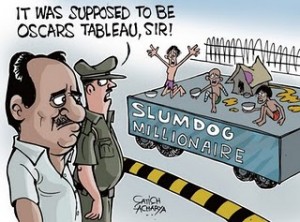Recently, India’s largest media house Bennett & Coleman (the Times of India, for the uninitiated) sent across a mail to all the employees, detailing austerity plans: freeze on salary hikes, cutbacks on past increases, etc.
In the rather detailed and inspiring mail, Ravi Dhariwal, CEO, called upon the employees to “make personal adjustments and sacrifices for a greater cause”. And for the sake of oneness, there are salary cuts across the board.
What I am really curious about is that, when the times were good, and the business was booming, where was this spirit of oneness then? Why were not there salary increments across the board? Or is it that, when things go good it is because of a few bright souls (of course the top brass, who needs to be patted and rewarded accordingly) and when it is a downturn, it is everybody’s problem and the spirit of ‘oneness’ comes to fore. Well, such is life.
Nonetheless, the salary cuts at Times will have a domino effect on the rest of the industry, am sure a lot more media company CEOs will be emboldened by this step and must be drafting a visionary piece of letter, that makes it sound almost like a necessary sacrifice. For all of them, I am pasting Mr. Dhariwal’s inspiring piece.
Just one request to all the CEOs. whenever you send out the mail, let the daggers be out. Please don’t sugarcoat it with moral platitudes of oneness and togetherness. In these trying times, the last thing one needs is platitudes.
The original (and inspiring) piece:
Confidential: Times Pay Revision Cut
Dear Colleagues,
Over the last five years we have had a dream run as a company. In July 2008, we grew to be a billion dollar company, growing at 20% per annum, nicely profitable, growing shares in almost all geographies, expanding our editions into newer territories and winning important competitive battles. Why do I call it a dream run? Because we met success everywhere, including against competitive attacks in large markets. This encouraged us to think of expanding even more rapidly. We made plans to double our capacity, launch many more new editions, take Mirror to other cities and continue to grow our business at the same pace. Not only our business, we all grew both professionally and personally in the last 5 years.
Continue reading

